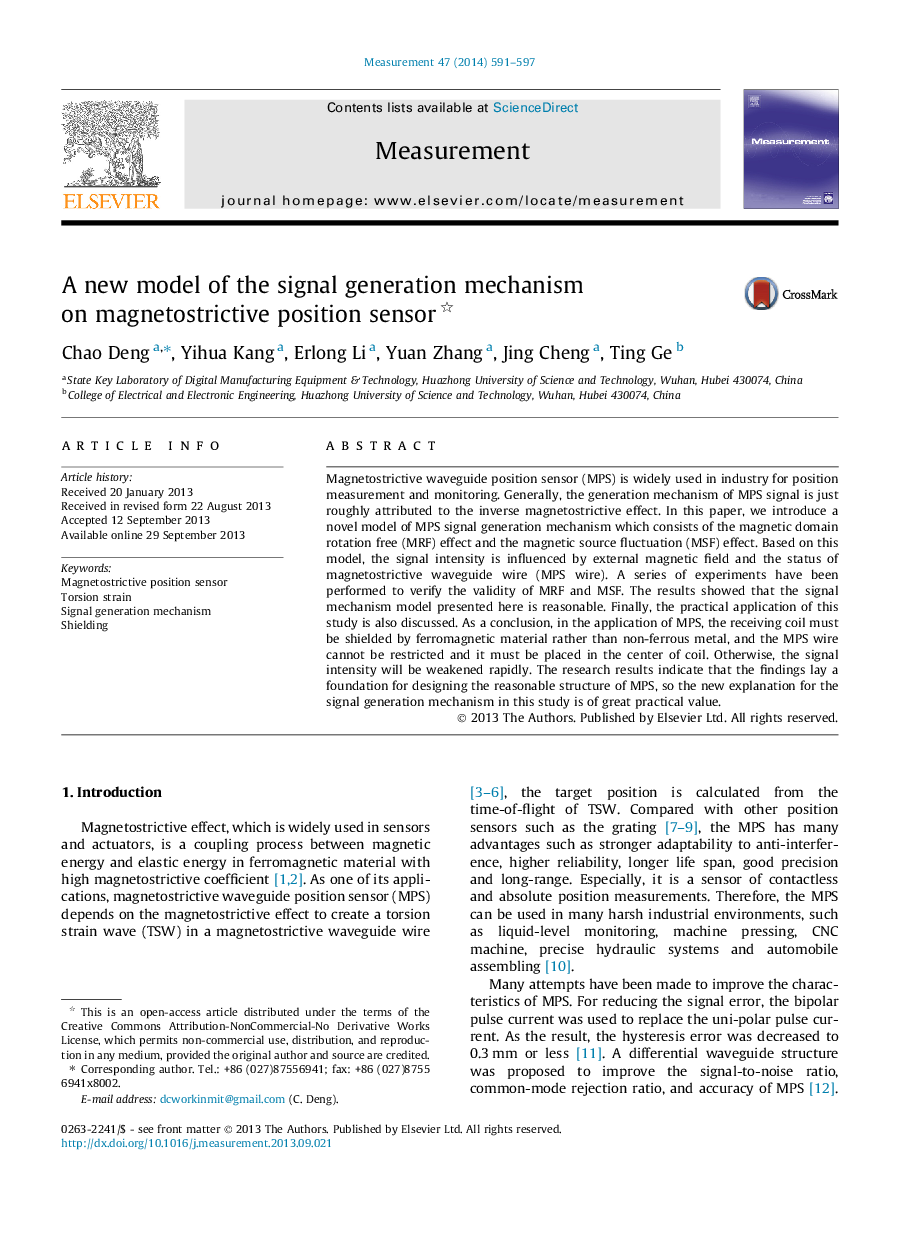| Article ID | Journal | Published Year | Pages | File Type |
|---|---|---|---|---|
| 7126361 | Measurement | 2014 | 7 Pages |
Abstract
Magnetostrictive waveguide position sensor (MPS) is widely used in industry for position measurement and monitoring. Generally, the generation mechanism of MPS signal is just roughly attributed to the inverse magnetostrictive effect. In this paper, we introduce a novel model of MPS signal generation mechanism which consists of the magnetic domain rotation free (MRF) effect and the magnetic source fluctuation (MSF) effect. Based on this model, the signal intensity is influenced by external magnetic field and the status of magnetostrictive waveguide wire (MPS wire). A series of experiments have been performed to verify the validity of MRF and MSF. The results showed that the signal mechanism model presented here is reasonable. Finally, the practical application of this study is also discussed. As a conclusion, in the application of MPS, the receiving coil must be shielded by ferromagnetic material rather than non-ferrous metal, and the MPS wire cannot be restricted and it must be placed in the center of coil. Otherwise, the signal intensity will be weakened rapidly. The research results indicate that the findings lay a foundation for designing the reasonable structure of MPS, so the new explanation for the signal generation mechanism in this study is of great practical value.
Keywords
Related Topics
Physical Sciences and Engineering
Engineering
Control and Systems Engineering
Authors
Chao Deng, Yihua Kang, Erlong Li, Yuan Zhang, Jing Cheng, Ting Ge,
